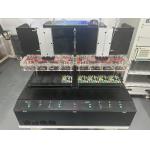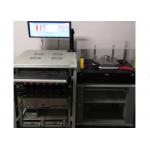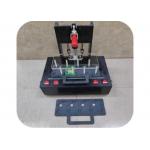Charging Pile Testing Equipment
Testing Project Feature Summary: Expandability: Supports hardware
expansion and software secondary development. Reliability:
All-in-one cabinet with core components from internationally
renowned brands. Operability: User-friendly software interface,
one-click operation, modular design. Practicality: Automatic
judgment, precise testing, capable of unattended or minimal human
intervention testing. Versatility: Flexibly configurable based on
testing needs; replacing the same type of product only requires
changing the test fixtures and programs.
How to Perform Hardware Expansion:
Hardware expansion typically involves adding or upgrading physical
components within a computer system to enhance its performance,
functionality, or storage capacity. Below are some key steps and
considerations for performing hardware expansion:
Determine the Expansion Needs:
- Evaluate the Current System: First, understand your existing hardware configuration and
identify any performance bottlenecks. This could include the
processor (CPU), memory (RAM), storage (hard drive or SSD),
graphics card (GPU), etc.
- Set Goals: Clearly define what you aim to achieve through hardware expansion.
Are you looking to improve gaming performance, speed up video
editing, increase storage space, or something else?
Select the Appropriate Hardware:
- Compatibility Check: Ensure that the new hardware is compatible with your existing
system. This includes checking the motherboard's slot types, power
supply unit's power output, and case space.
- Budget Considerations: Choose hardware that fits within your budget. High-performance
components are usually more expensive but offer better performance
improvements.
Purchase the Hardware:
- Buy hardware from reliable retailers or manufacturers to ensure
product quality and after-sales service.
Install the New Hardware:
- Preparation: Before starting, shut down the computer and disconnect all power
sources. Have the necessary tools ready, such as a screwdriver.
- Installation Process: Follow the manufacturer’s instructions for installation. For
complex components (such as graphics cards or additional memory),
you may need to open the side panel of the case.
- Static Protection: Take appropriate static precautions when handling internal
components to avoid damaging sensitive electronic parts.
Testing and Configuration:
- Reconnect the power and start the computer. Check if the new
hardware is correctly recognized by the system.
- Install necessary drivers and software to ensure the new hardware
works properly.
- Run benchmark tests or real-world applications to verify that the
performance improvement meets expectations.
Monitoring and Maintenance:
- Regularly check the status of the hardware to ensure all components
are operating within normal temperature ranges.
- Update drivers and firmware to maintain system stability and
security.
Performing hardware expansion can significantly enhance the
performance and functionality of a computer, but it requires
careful planning and execution to ensure compatibility and
stability. If you are unsure how to perform hardware expansion, it
is recommended to consult a professional technician or seek
specialized services








